Daniel, Sheila, Terry, Nutsinee
We locked the thing!
Below are some of the relevant information:
Broad Band PD at SHG transmitted (Design document: https://dcc.ligo.org/LIGO-T1100467)
Responsivity (1064) = 0.1A/W
Transimpedance = 2kOhms
Calculated power hitting the PD = 10mW
EOM1 (Newport 4004 Broad Band Phase Modulator)
Modulation response = 15 mrad/V @1000nm
Drive voltage = 1.5Vp (1Vrms)
Modulation Depth = 22.5 mrad
Other values:
Measured transmitted DC level = 2V
Measured RF power envelope (peak-peak) = 8mV
Measured PDH error signal (peak-peak) = 40mV
FSR of the SHG cavity = 3GHz (cavity length ~2.5cm, KTP crystal index of refraction = 1.80302 gives 2.75 cm extra path length. This 3GHz number was also found buried in SURF report by Nathan Zhao)
Finesse = 89.75 (used r=0.9, value for the input coupler) I mistyped the % earlier. Finesse is just a number, not percentage.
Calculated Linewidth = 30MHz
Open-loop gain transfer function
The boost labels on the medm screen are still wrong. That's due to be fixed.
The first boost in the common path is actually 0/10 (pole/zero) and the second boost is 40/200
The "boost" in the slow path is actually "compensation" (4/400) and the "compensation" is just a pole at 100kHz with no zero.
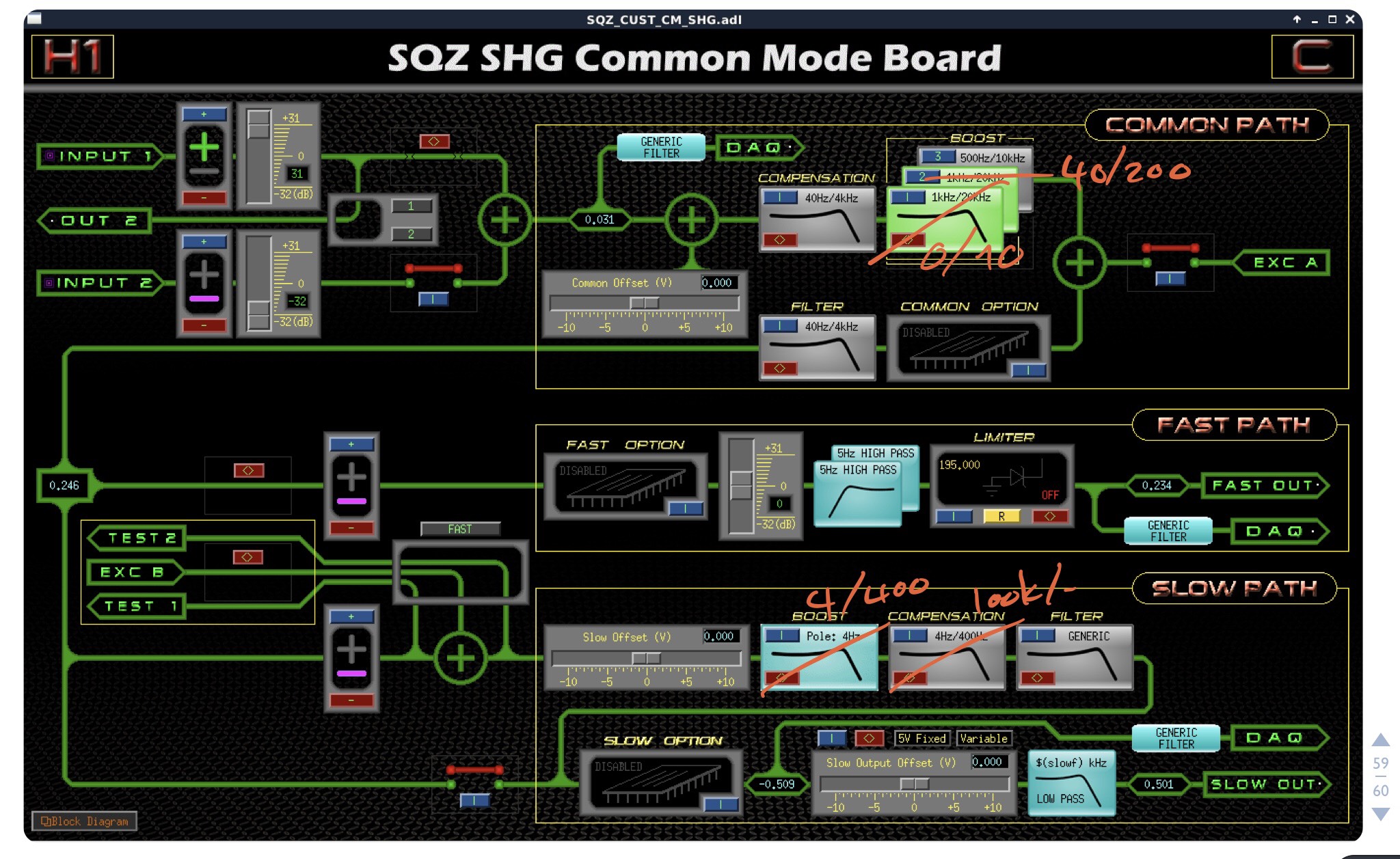
TF WITHOUT common path second boost engaged has UGF at ~850Hz
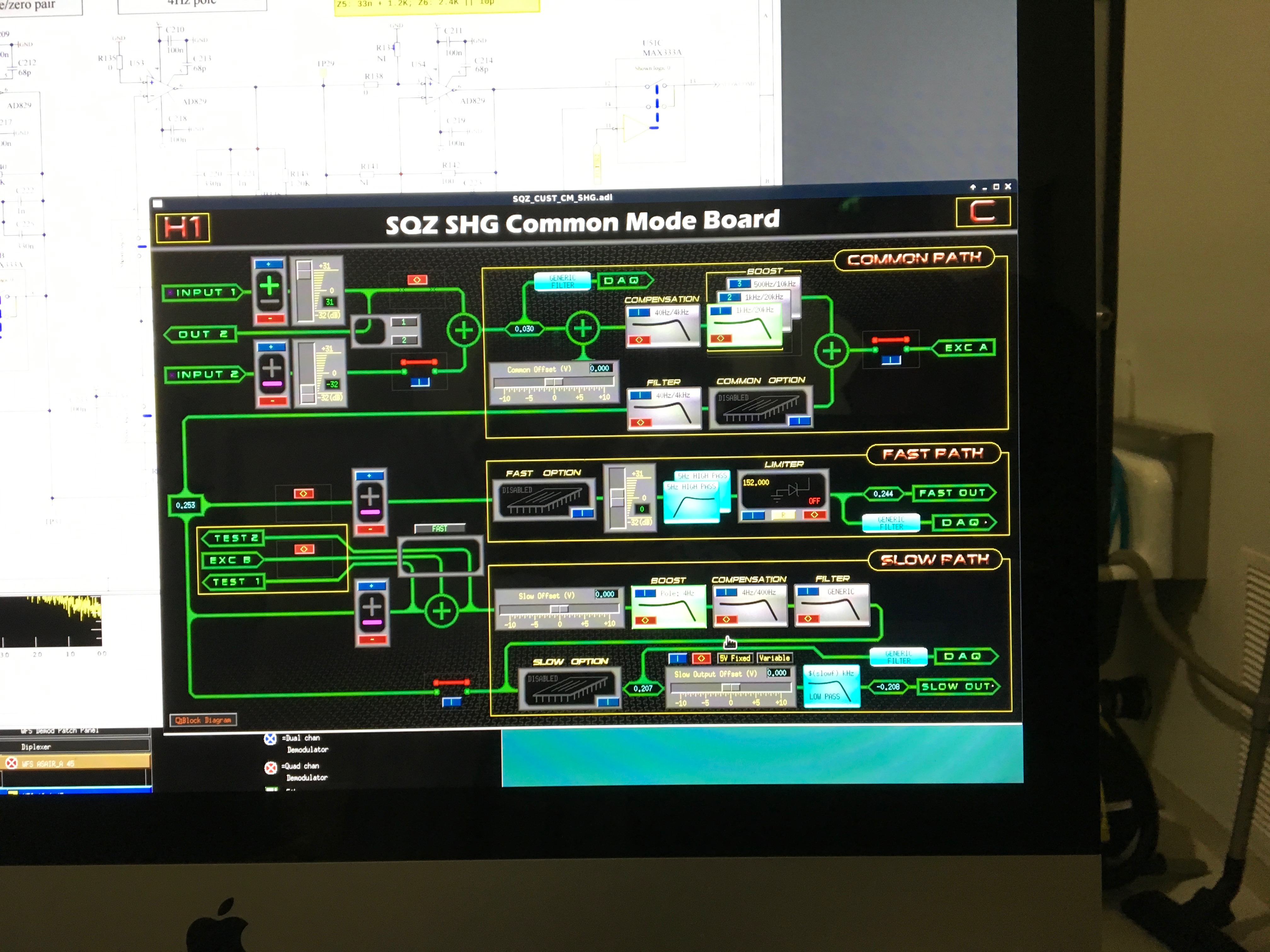
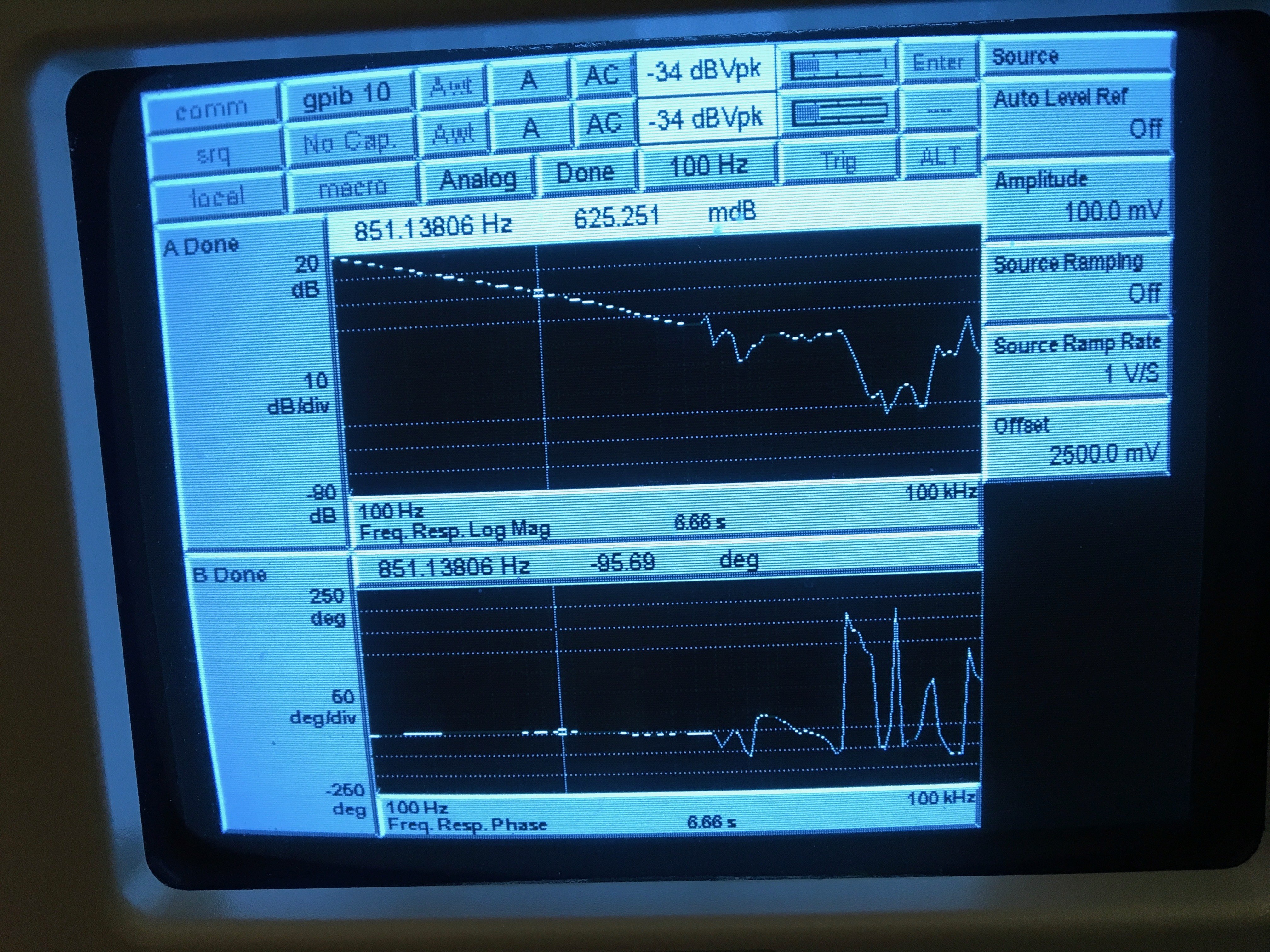
TF WITH common path second boost engaged has UGF at ~1.5kHz
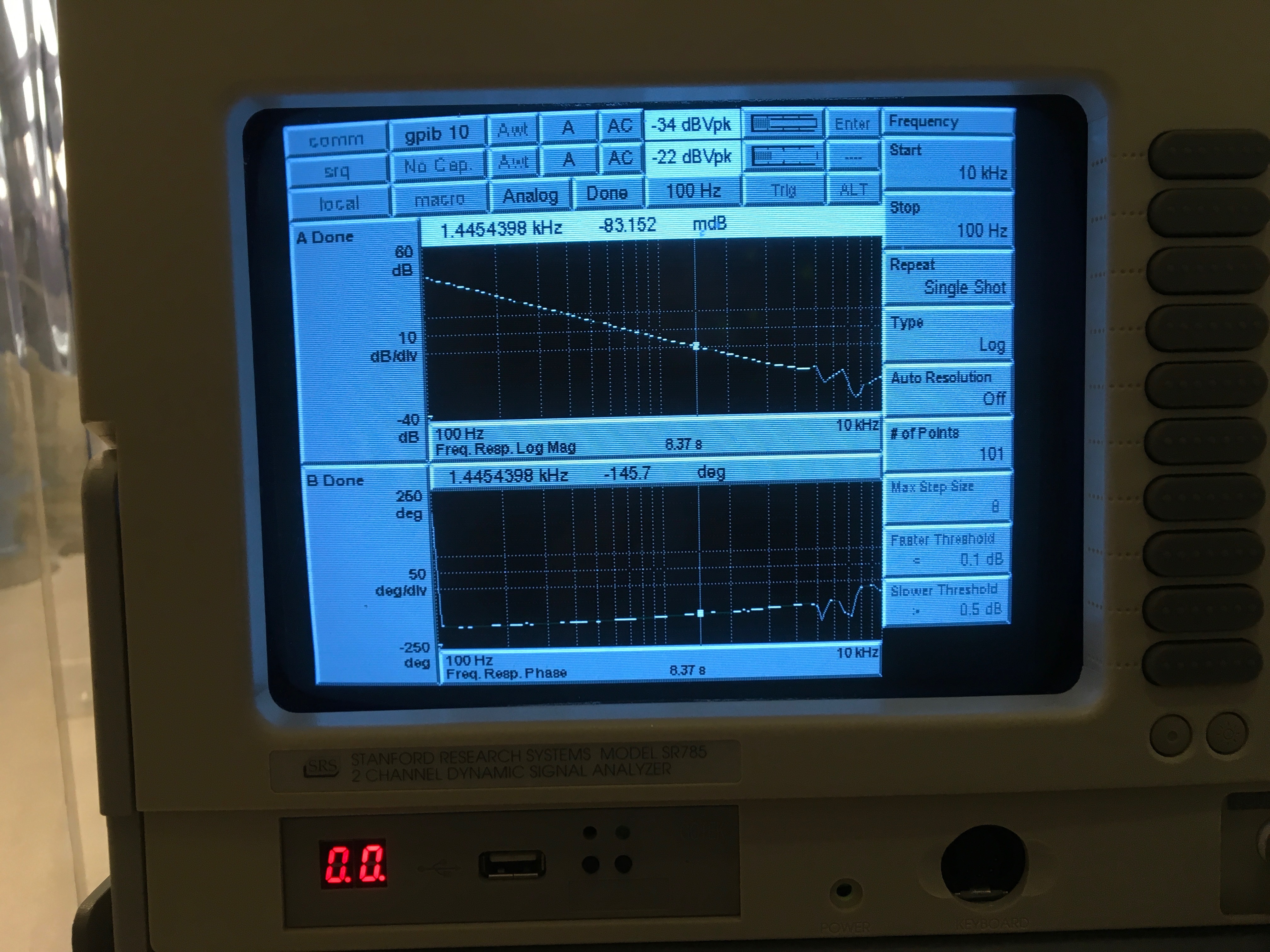
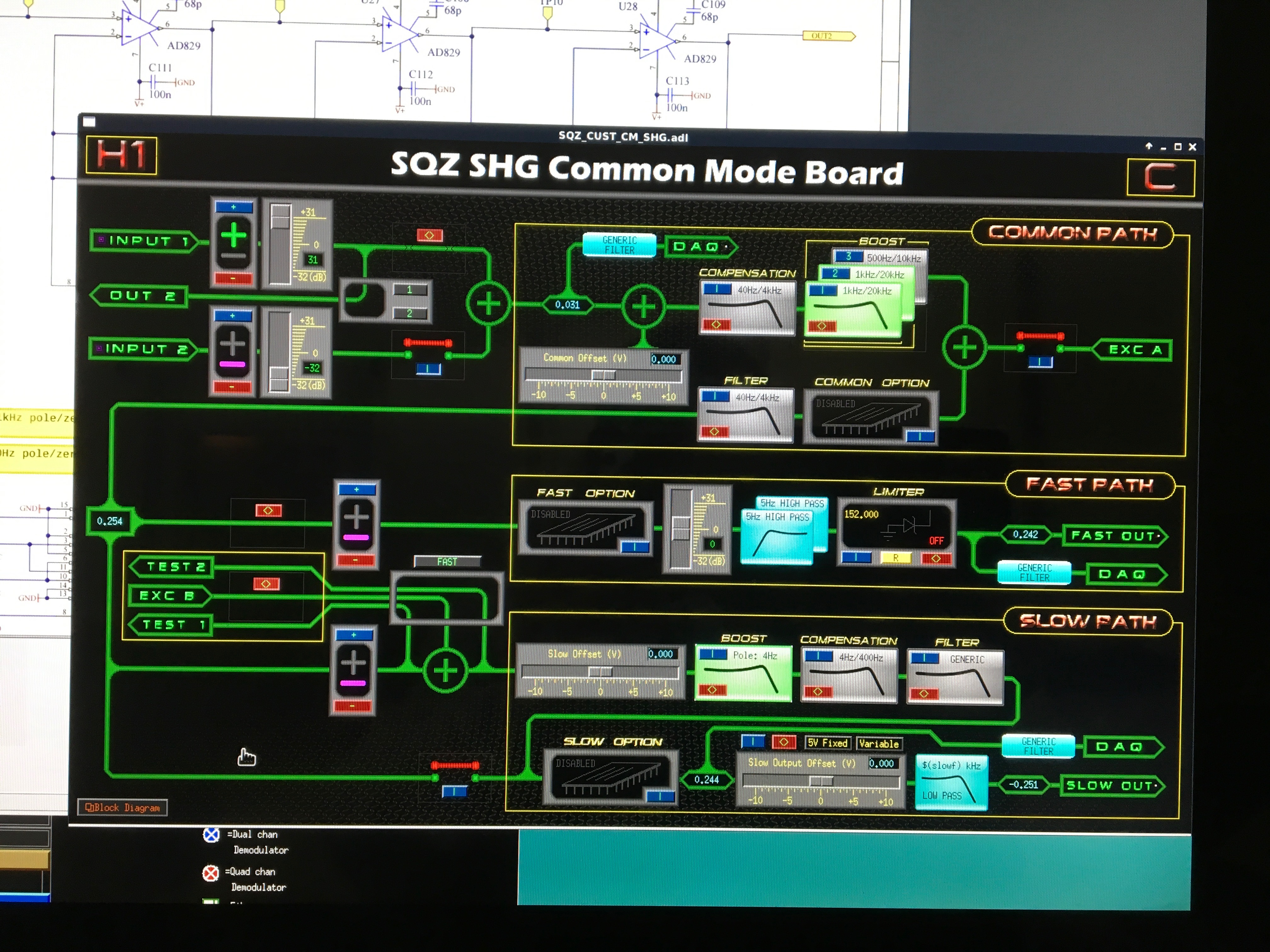
Other stuff worth mentioning
- SHG TEC control is now working
- SHG and CLF common mode board retested after the wrong wiring was fixed-- they're good
























